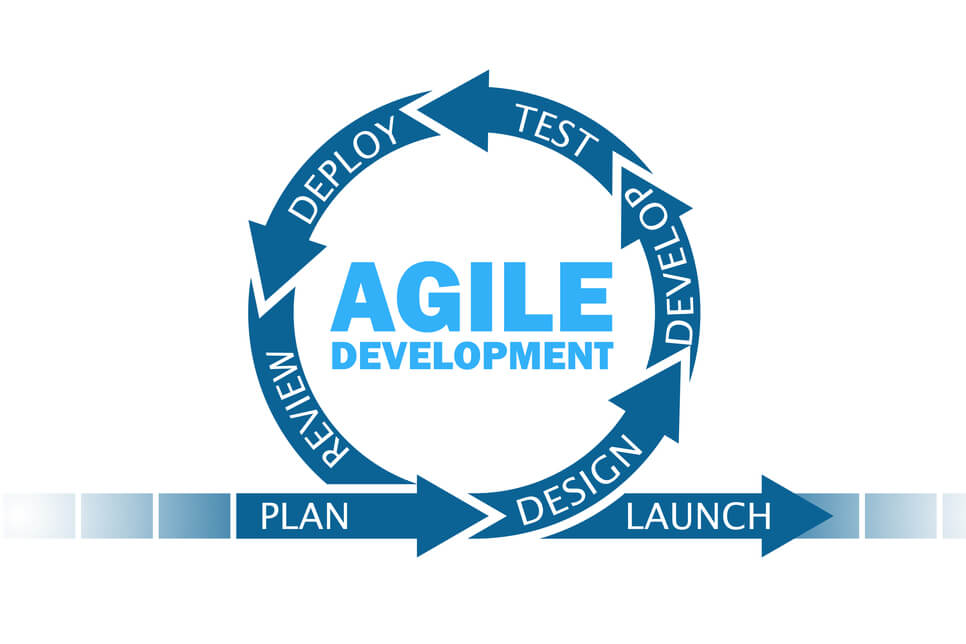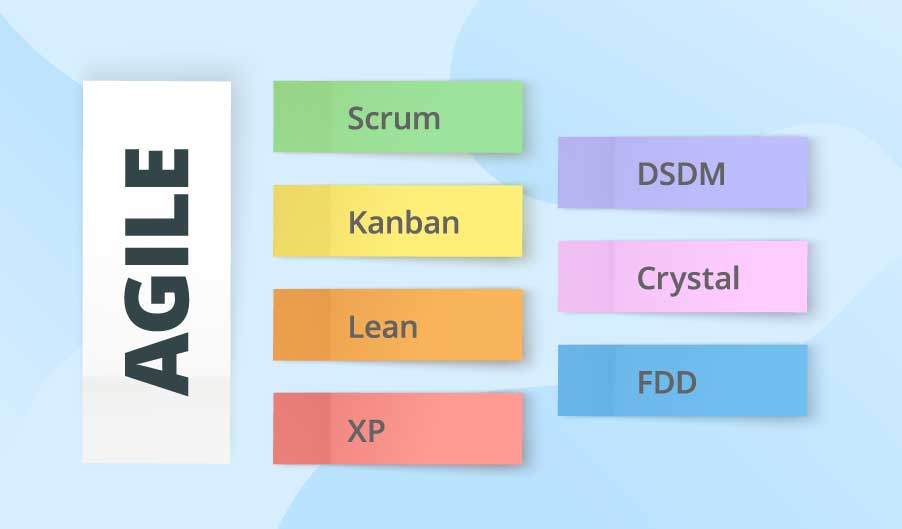Agile and its methodologies are a people-focused, results-focused approach to software development that respects our rapidly changing world.
Would you wait for a year to implement the key elements of an IT project? This was a typical scenario, 30-years back. Even though the success rate of IT projects was only around 48%, most of the agile software development life cycles relied on the waterfall model… Until the introduction of Agile.
Disappointed with the status quo, IT companies started introducing Agile around the ’90s, and in 2000 the Agile development methodology got the recognition it deserved from IT companies for their flexible, fast implementation of client feedback.
As Agile got extensively used, we saw software development of methods like Scrum, Rapid Application, Development, Extreme programming, DSDM, Feature-driven development, Pragmatic programming lean model, and many more taking the edge. Even though project managers follow Agile, most IT professionals lack basic knowledge on the differences between the different Agile development methodologies.

Agile practices
Although the Agile software development model originally started by following a basic principle, now there are 42 types of Agile practices. Terms like stories, iterations, sprints, and backlogs relate to Agile. The stories are close to the use cases where one considers the entire picture for a user’s activity. These stories are divided into tasks and assigned to individual developers and testers to complete the tasks or features. A 2-week phase is called an iteration that covers the deliverable stories, whereas a sprint is a short period that marks the completion of a release.
Now, we will look into widely used Agile practices to know their differences.
1. Scrum
Scrum, a lightweight flexible framework is often the first choice of the project manager. It saves time and money, encourages teamwork, eases development, and adapts well to any company structure. The Scrum Master is responsible to foster a scrum environment while guiding the team. It starts with the features in iterations that include backlog items and follows continuous development and testing for an iteration. Each iteration brings the new features and adds the backlog features to the upcoming iterations.
The team undergoes a standup meeting every day to discuss their progress, blockage, or the challenges faced for the task creation.

2. Kanban
In addition to Scrum, Scrum masters follow the Kanban framework, used to track the progress of tasks. The project related task like development, testing is tracked by the framework with the columns like backlog, in-progress, blocked, done, in-testing, and peer review. As the board is visible to all, so is the progress of all the tasks displayed on the board. The sticky notes describe the task’s details and the individuals working on it.
Though the Kanban framework is implemented with Scrum, it also blends well with other Agile methodologies like DevOps, extreme programming or Scrumban. Kanban gives a continuous flow to projects progress, as the team picks the tasks for completion. It also eliminates the requirement of a project manager for the teams working independently.
There are many Agile project management tools out there available. If you’re looking for a free, simple and highly powerful Kanban tool, check Trello.com.
3. DevOps
DevOps is used by the project managers for continuous integration and continuous development (CI/CD). It brings the development and operations together to generate an infinite loop of planning, coding, building, testing, deploying, operating, and monitoring. The CI/CD gives additional power to Agile project management principles. DevOps types work along with the Agile methodologies.
4. Scrumban
Project managers usually prefer working on Scrum and Kanban simultaneously. Scrum gives a structure to the project, whereas the Kanban board shows the details and task progress.
The Scrum Master decides the details like stories, tasks, iterations for the software development cycle. The execution of the Kanban is undertaken by individuals working on the task. As the tasks status change, the team members update the Kanban board for their task.
5. Scrum@Scale (S@S)
The core concept of Scrum@Scale is small teams, minimal bureaucracy and scaling across the organization. A small team of 3-9 functional members is easier to handle, and minimal bureaucracy reduces the time required to make decisions. Smaller organizations use this approach, as it helps to cut back the obstacles. In the end, multiple teams deliver potentially shippable increments as a fully integrated project.
6. Large Scale Scrum (LeSS):
Large Scale Scrum (LeSS) is a way to scale Scrum. LeSS highlights the application of rules, principles, and elements of Agile to scale IT projects. More specifically, it’s a framework for scaling Scrum to multiple teams that work together on the same product. Each team works on several projects in Sprints (short-term increments of one month or less).

7. Scaled Agile Framework (SAFe)
The IT organizations working on SaFe have a strong foundation of Scrum and large software development teams. It combines, Lean, Agile, and DevOps for business agility. Best for large organizations, it provides concrete guidance to minimize team dependencies. Tools like Program Increment Planning align everyone and reduces team dependencies.
Scaled Agile Framework is configurable at 4 levels: team, program, large solution, portfolio. It guides on 3-levels of Agile for product delivery and also extends Agile to the portfolio level.
Project managers can blend SAFe with Agile frameworks like Kanban, S@S, extreme programming, and LeSS by using the right Agile project management tools.
8. Test-Driven Development (TDD)
Test Driven Development (TDD) is a software development practice that focuses on creating unit test cases before developing the actual code. It is an iterative approach that combines programming, the creation of unit tests, and refactoring.
Projects following this approach are continuously improved while their core frameworks are kept intact for the basic functionalities. As such, TDD brings together unit testing, development and designing. Unit-testing frameworks are used by the developers as they start working on the task. The developers are clear about the features and before coding, they define the tests, class design, and write the conditions for their functionalities to be approved. This approach identifies the bugs at an early stage of development, forces to think about the design and functionality simultaneously, and saves time during the integration and testing phases. Moreover, it helps to change the legacy code easily.
Take away
Most IT companies now implement the Agile development methodology, but few know its nuances. This article highlights the most used ones. They can be applied independently or together, depending on your team or company structure and size. Scrum, Kanban, and TDD is the most used combination with DevOps CI/CD operations.
At Afocus, we use a combination of agile software project management methods to build eCommerce websites, SaaS platforms or mobile apps.
You have a project in mind? Contact us.





0 Comments